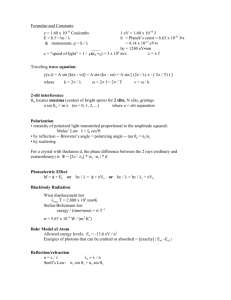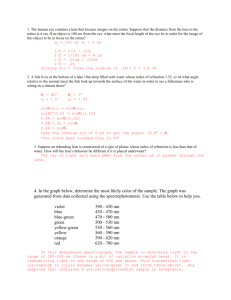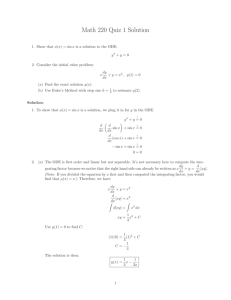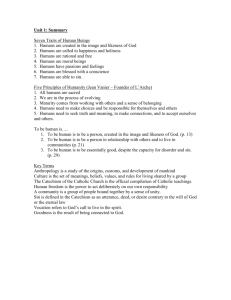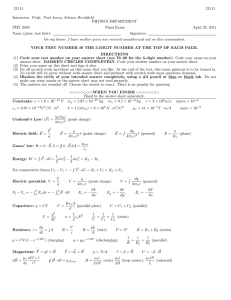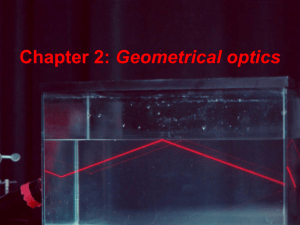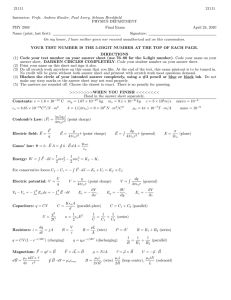Formulae and Constants: e = 1.60 x 10-19 Coulombs 1 eV
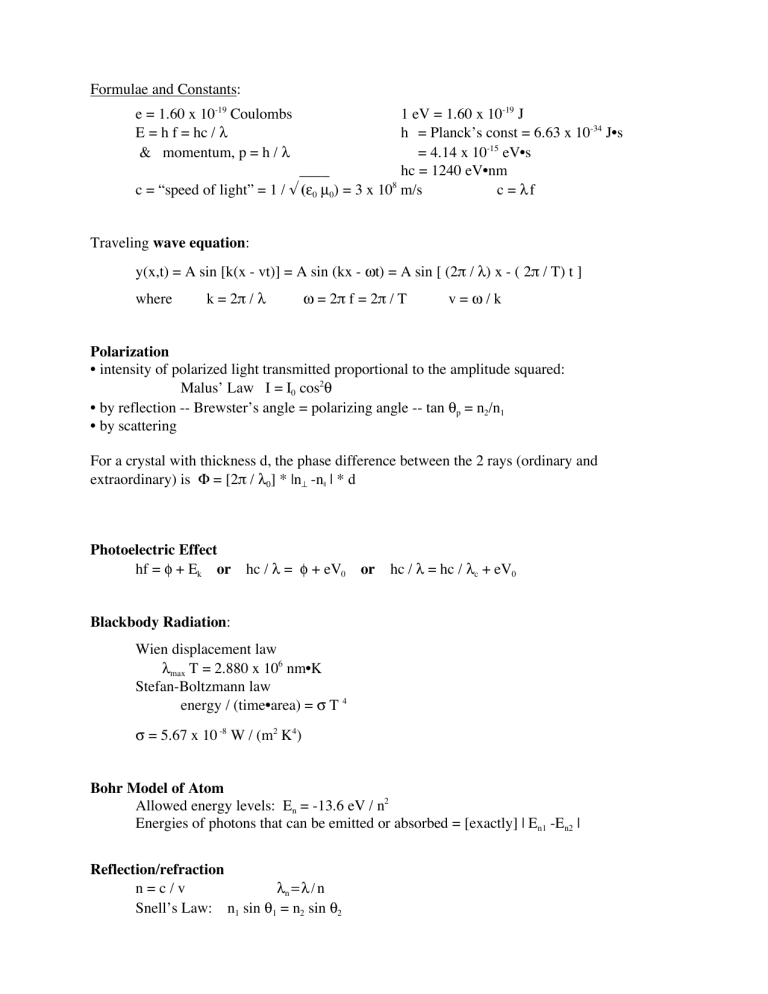
Formulae and Constants: e = 1.60 x 10 -19
E = h f = hc /
λ
Coulombs
& momentum, p = h /
λ
1 eV = 1.60 x 10 -19 J h = Planck’s const = 6.63 x 10
= 4.14 x 10 -15 eV•s
____ c = “speed of light” = 1 / √ (
ε
0
µ hc = 1240 eV•nm
0
) = 3 x 10 8 m/s c =
λ f
-34 J•s
Traveling wave equation : y(x,t) = A sin [k(x - vt)] = A sin (kx - ω t) = A sin [ (2 π / λ ) x - ( 2 π / T) t ] where k = 2 π / λ ω = 2 π f = 2 π / T v = ω / k
Polarization
• intensity of polarized light transmitted proportional to the amplitude squared:
Malus’ Law I = I
0
cos 2 θ
• by reflection -- Brewster’s angle = polarizing angle -- tan
θ p
= n
2
/n
1
• by scattering
For a crystal with thickness d, the phase difference between the 2 rays (ordinary and extraordinary) is
Φ
= [2 π /
λ
0
] * |n
⊥
-n
||
| * d
Photoelectric Effect hf =
φ
+ E k or hc /
λ
=
φ
+ eV
0 or hc /
λ
= hc /
λ c
+ eV
0
Blackbody Radiation :
Wien displacement law
λ max
T = 2.880 x 10 6 nm•K
Stefan-Boltzmann law energy / (time•area) =
σ
T 4
σ
= 5.67 x 10 -8 W / (m 2 K 4 )
Bohr Model of Atom
Allowed energy levels: E n
= -13.6 eV / n 2
Energies of photons that can be emitted or absorbed = [exactly] | E n1
-E n2
|
Reflection/refraction n = c / v
Snell’s Law: n
1
sin
θ
1
λ n
= λ / n
= n
2
sin
θ
2
For step-index fibers
Numerical Aperture = N.A. = n o
sin
θ m
___________
___________
= √ n
1
2 -n
2
2
Skip distance = L s
= n
2
d / √ n
1
2 -n
2
2
# of modes = ( 1 /
2
) [ π d (N.A.) /
λ ] 2 in order to be single-mode, a fiber diameter d must be:
d < 2.4 λ / π (N.A.)
For fibers in general :
Loss of power in dB =
α
L = 10 dB log
10
(P
1
/ P
2
where α is the attenuation coefficient
)
Lenses/Mirrors
Textbook sign conventions: [these assume light is coming from the left !]
• if the object/image is to the left of the vertex (where lens/mirror crosses axis), its distance u/v is negative
• radii of curvature follow the same rule as above, so diverging mirrors have positive f = focal lengths, but diverging lenses have negative focal lengths
Object/image location
Magnification
Mirror Equations
1/u + 1/v = 2/r = 1/f m = h i
/ h o
= - v / u
Lens Equations
- 1/u + 1/v = 1/f m = h i
/ h o
= v / u
For Mirrors: f = radius of curvature / 2
Lens Maker’s Equation: 1/f = [(n
2
- n
1
) / n
1
] [ 1/r
1
3 standard rays for ray diagrams:
• in thru focus, out parallel to axis
• in parallel, out thru focus
• in thru center, undeviated
-1/r
2
]
